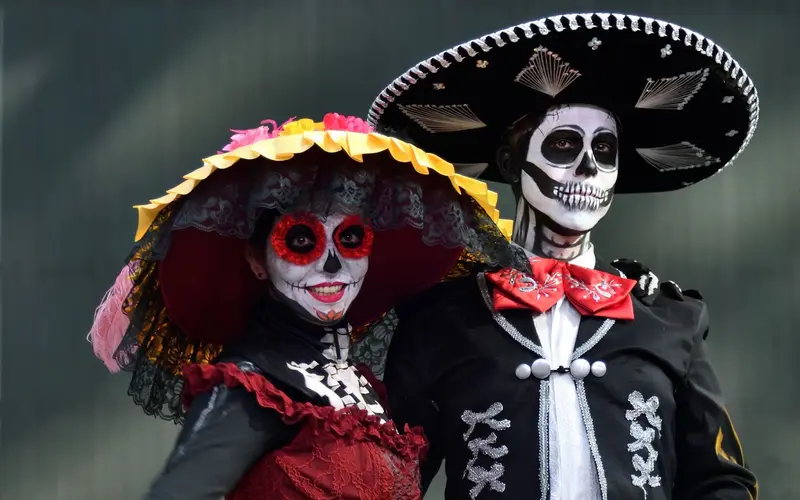Guide to Day of the Dead in Mexico
Wednesday, 2025/10/29233 words3 minutes2675 reads
Día de Muertos, recognized by UNESCO for its cultural significance, exemplifies Mexico's unique approach to death and, by extension, life itself. This millennia-old celebration, rooted in the beliefs of the Toltecs and Aztecs, has evolved over centuries to incorporate Catholic traditions while maintaining its indigenous essence.
The observance, occurring on November 1 and 2, is a nuanced interplay of mourning and festivity. It commences with Día de los Inocentes, honoring deceased children, followed by Día de los Difuntos for adults. Central to the celebration are ofrendas, meticulously crafted altars that serve as both a tribute to the departed and a symbolic homecoming for their spirits.
The cempasúchil, or marigold, plays a pivotal role, its vibrant hue and pungent aroma believed to guide souls back to the mortal realm. Cemeteries transform into vibrant social hubs, where families congregate to clean graves, share anecdotes, and indulge in the deceased's favorite foods and music.
Culinary traditions vary regionally, from Oaxaca's mole negro to Mexico City's pozole, though pan de muerto remains a ubiquitous treat. In recent years, elaborate parades and Catrina-inspired face painting have gained popularity, particularly in urban centers, adding a contemporary flair to this deeply rooted cultural phenomenon.
Ultimately, Día de Muertos encapsulates the Mexican ethos of embracing the ephemeral nature of existence, fostering a collective acknowledgment that life, in all its vibrancy, is to be celebrated even in the face of inevitable mortality.
